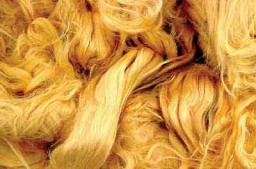
As the fashion brands move towards more eco friendly fabrics, the world of textiles continues to break new grounds with innovative fibres being explored; some have already found commercial success, while some others are still at the R&D stage. Indeed, the use of eco friendly and natural fabrics like cotton linen, silk, bamboo are on the rise, and some fresh sustainable and biodegradable fibres from trees, fruits and other edible products which have strong fibre content are being explored to give more options to the world of fashion. Apparel Online’s textile research wing explores some of these unconventional fibres which are the future of the world of textile and fashion.
As the green phenomenon grows, international trade fairs have started to showcase sustainable fibres in a big way increasing interest in this segment. Manufacturers are rethinking their production processes so as to minimize environmental risk and still provide consumers fashionable fits and fall. Indian textile manufacturers are also increasingly forthcoming in experimenting with new sustainable fibres. “We were the pioneers in making bamboo yarn and soya milk yarns in India. The manufacturers depend on the demand and it’s the designers sitting in Milan, Paris and the likes who create demand for niche products. New fibres are being innovated as the international brands are getting stringent day by day on sustainable products and they are pushing their suppliers to manufacture eco friendly products,” avers Ashish Bagrodia, Managing Director, Winsome Textile Industries Ltd.
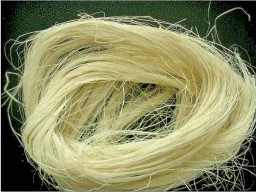
RSWM Ltd. has created many milestones in its five decades’ journey; in last two years it has commercialized 11 innovative products including yarn from special materials like bamboo and soya. “Our research team is working relentlessly and this year we hope to release five unique yarns, which shall help RSWM create a special niche in the world of textiles,” says JC Laddha, Executive Director. RSWM’s product basket comprises specialty, functional, technical and eco friendly yarn using nano-technology and biotechnological fibres.
Even denim companies like Ahmedabad based Modern Denim have made a move towards producing eco friendly denim. The company has recently developed denim with 70% bamboo and 30% organic cotton with inherent anti microbial properties. “We have to walk with times. Today we have tried these two natural fibres tomorrow I may try newer eco friendly fibres as that’s the need of the hour. We have used herbal dyes so I can say it’s a 100% eco friendly product apt for ladies and children as it has inherent anti microbial properties of bamboo,” shares Kiran Panchal, President (Marketing), Modern Denim Ltd.
With the Green and sustainability slogan getting stronger, international research companies are gearing up to find fibres from our natural habitat, which can also be commercially viable. In fact, some of these fibres were actually found in 60s or 70s but their commercial viability has been explored only now as R&D becomes more advanced.
Soybean Fibre… Ideal for Blending with other Fibres; Both Natural and Manmade
Soybean fibre was initially invented by Henry Ford in 1937 and was termed as soy “Wool’. The new commercially viable soybean fibre was invented in 1998 and promoted in 2000. Spinning methods have already been established for 100% soybean fibre and its blends with natural fibres like cotton, linen, wool, cashmere and silk and manmade fibres like polyester, viscose, tencel, polynosic, etc. are already available in the market.
Production of 100% soybean fibre yarns in the range of 21S-80S is possible, making it easy to blend with other fibres both natural and man-made for additional properties of value. A combination of Soybean/cashmere (80/20) enhances the hand feel and also lowers the manufacturing cost of cashmere products. It gives superior lustre and comfort, as well as anti-pilling and drape properties. Soybean and cotton blends (50/50) enhance the comfort, lustre, moisture-permeability, quick-dry and drape properties of cotton and upgrades cotton products.
Soybean if mixed with wool in 50/50 ratio gives excellent results taking advantage of both fibres — the lustrous, soft hand and strength of soybean fibre, and the elasticity and heat-retaining properties of wool. Spinning of high-count yarn is possible. Similarly, if Soybean and silk are blended 50/50 it provides a solution to problems of silk, such as poor resistance to staining from perspiration and water, poor light fastness and moisture permeability. Higher quality can be achieved at a lower cost.
Soybean protein contained in the fibre makes a superior, soft hand endowed with both moisture absorbency and permeability, which makes best application in knits and innerwear.
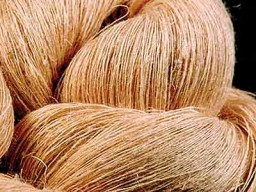
Finished with an anti-bacterial agent, health-care functionalities are also given. It has great potential in its use in high-grade knits and innerwear. Woven fabrics made of soybean fibre blends with other natural or man-made fibres have so far been used in shirting and home textiles.
Fibre from Banana & Pineapple Waste
Agricultural waste from banana and pineapple can be used as alternative materials for production of home textiles, apparels, non-woven and industrial fabrics. Department of Science and Technology’s (DOST) Philippine Textile Research Institute’s (PTRI) researcher Nora Mangalindan has come up with this source of fibre.
According to the research, pineapple plantations span on almost 59,000 hectares in Philippines which can yield 55,483 tonnes of pineapple fibre. Similarly, the country has nearly 4,47,000 hectares of land under banana plantations that can generate 3,07,000 tonnes of banana fibre.
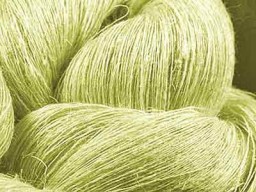
Mangalindan says that the use of these fibres also have technological benefits, as besides being ecologically sound, biodegradable and sustainable, they also have better performance ability in terms of fibre and fabric properties. Pineapple fibres are obtained from pineapple waste, which has high lignin and cellulose content and were already being used as organic waste till recently. But with recent experiments proving successful in producing silk-like textiles when fused with polyester or silk, these fibres have a new utility. Pineapple fibres are very lightweight, soft and easy to maintain and wash, and also it fuses well with other fabrics and provides an elegant look.
On the other hand, though banana fibre resembles the fibre prepared from bamboo and ramie, it has a better fineness. In spite of being lightweight, it is very strong and has high moisture absorption capacity, and above all, it is also biodegradable. In olden times, pineapple and banana fibres were used to prepare ropes, mats and other composite materials. However, with increasing awareness regarding eco friendly fabrics, these fibres are now being increasingly used for preparation of apparels and home furnishings.
Fibre from Peanut Protein…Wool like fibre
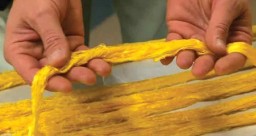
Recent research at the Southern Regional Research Laboratory (USA) has resulted in the development of a fibre produced from peanut protein which has been named Sarelon. Peanut protein fibre is light cream colour in its natural state and has a soft handle and warmth, like wool. The fibre can be dyed with wool dyes. It has about 80% of the strength of wool. It can be stretched without breaking almost as much as wool.
Woven textile fabrics composed of blends of peanut protein fibre and rayon or wool are used in suitings, linings for coats, and blankets. Two companies in the United States have made the fibre in the pilot plant and have begun further work on the production of the fibre.
Some fibres still under R&D
In our Tex-find segment, we have covered many innovative fabrics which are yet to be commercialized. Some of the promising ones are spider silk fabric, milk fibre out of spilled milk, waste rice straw for furnishing fabrics and crabyon – fibre out of crab shell. Spider silk fabric is made from the silk of more than a million wild spiders and it is stronger than Kevlar, yet far more flexible with stretching ability up to 40% more than its normal length without breaking.
Milk fibre has been created by a German company wherein spilled milk is allowed to ferment before it is turned into a powder. It is then heated and mixed with other natural ingredients and turned into yarn.
[bleft]A combination of soybean/cashmere (80/20) enhances the hand feel and also lowers the manufacturing cost of cashmere products. It gives superior lustre and comfort, as well as anti-pilling and drape properties. Soybean and cotton blends (50/50) enhance the comfort, lustre, moisture-permeability and quick-dry and drape properties of cotton. [/bleft]
Blending the unique properties of New Zealand’s strong wool and Chinese waste rice straw, New Zealand’s textile firm, The Formary and Managing Director Bernadette Casey are in collaboration with the State-owned Chinese rice company Grand Peak (Tianjin) to develop a high quality upholstery fabric that possesses a high tensile, anti-bacterial and fire resistance properties of the rice straw fibre, making it perfect for curtains and carpets, besides being durable and attractive also.
Crabyon is a fibre made from the shell of a crab, and with a blend of chitosan and viscose. Chitosan’s structure is very similar to cellulose, and is made from chitin, a compound extracted from the shell of a crab. Crabyon is antibacterial and it’s also totally biodegradable… great quality for fashion designers interested in using sustainable materials!
How Sustainable?
Since many eco fibres have remarkable environmental qualities, the processing of these fibres is often not something that is examined in much detail. Many of these fibres are processed using extremely harsh chemicals that leach into the soil and waterways and do a lot of damage to the environment.
Kiran Panchal feels that natural dyes should be used to make these unique fabrics 100% eco friendly, moreover many of the processing methodologies are patented and there is not much known about them.
In spite of all these issues, these fibres are far less damaging to people and the environment than conventional cotton and petroleum based synthetics.
It therefore makes sense to continue to support these R&D efforts, insist on processes that are close to nature and push for the increasing greening of technologies.









